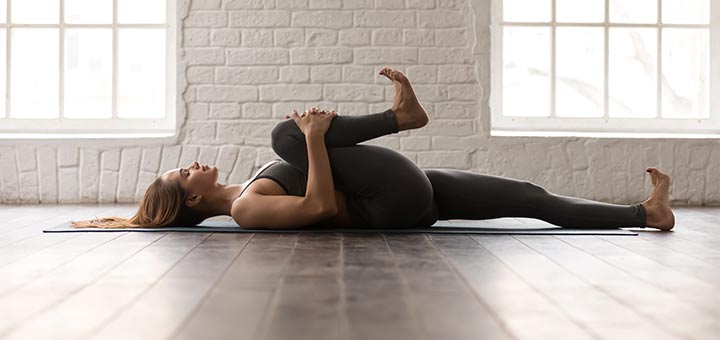Constipation is defined by three or fewer bowel movements per week. A constipated person can experience dry stool or pain when using the restroom. Nobody wants to discuss constipation because it is an “embarrassing” conversation topic. We are not afraid of this topic because nothing good comes from hiding it. The great thing is that you can easily relieve constipation with a few simple exercises.
What Causes Constipation?
There is not a specific cause for constipation, and each person is affected differently. Dehydration, certain medications (water pills, calcium, painkillers, iron pills, or some antacids), stress, and poor eating habits can cause bowel inconsistency. If the large intestine slows down too much, it becomes harder to eliminate stool. The large intestine pulls too much water from stool, which makes it difficult to pass.
How Does Exercise Help?
Health experts say that almost any form of physical activity can help a constipated person pass stool more easily. Studies show that aerobic exercise accelerates heart rate and breathing, which in turn stimulates the natural contractions of intestinal muscles. When these muscles can squeeze better, stool becomes more easy to eliminate.
When Should You Exercise?
According to physiologists, wait about one hour after you eat a proper meal before engaging in demanding physical activity. Blood flow increases to the stomach and intestines post meal. Exercising immediately after you eat diverts blood away from the stomach and to your muscles and heart instead. Reduced blood flow to the digestive system after eating a meal results in weaker intestinal contractions. This causes food to sluggishly move through the digestive tract, and a person can experience bloating, gas, and constipation as a result.
The Best Exercises For Constipation
Pelvic Floor Exercises
The layer of muscles at the bottom of the pelvis is called the pelvic floor. This includes the bladder and bowel. When you strengthen these muscles, you can push stool out of the colon with ease. Sit on the floor on your knees and imagine that you are stopping yourself from passing gas. This forces you to squeeze the muscles around anus. Hold for five seconds and then release for ten seconds. Repeat this five times and then do the entire process five more times at half strength.
Cardio
To stay regular, it is best to move as much as you can. Cardiovascular exercise works to increase blood flow to the digestive tract to encourage intestinal muscle contraction. Now, many exercises fall under the cardio umbrella. You can dance, swim, bike, walk, jog, or run to stimulate your bowels. Aim to engage in moderately-intense aerobic exercise for 30 minutes a day to relieve constipation.
Yoga Poses
As you may know, certain yoga poses benefit different organs and systems in the body. Some reduce stress, some benefit the nervous system, and others increase blood flow to the digestive tract. Whether it is morning, afternoon, or night, engage in these poses to stimulate your bowels:
Wind Relieving Pose
Lie flat on your back and bring your right leg up toward your body. Hug your right shin with your arms and pull it into your chest. Hold for 10-30 seconds before returning to the starting position. Repeat this on the left leg and then draw both legs up and into the chest for the same amount of time.
Supine Twist
Lie flat on your back and bring both of your knees up and into the chest. Extend your left leg out straight and move your right knee across the body to the left. Keep your shoulders flat on the floor and look to your right. Hold this position for 20 breaths before releasing. Repeat on the left side.
The 4-7-8 Breathing Method
You can do this lying down or sitting up. To start, engage your diaphragm to take a deep breath in, counting to four seconds during your inhale. Hold your breath for seven seconds, and then breathe out completely for eight seconds to expel the air from your lungs. Repeat this process three more times for four complete cycles.
In conclusion, it may take a bit of trial and error to figure out which exercise(s) work best to relieve constipation. If you experience pain during a specific exercise, please stop and do not continue, or simply find a modified version that is more feasible. Remember, staying active is a great way to manage constipation and reduce stress.

















